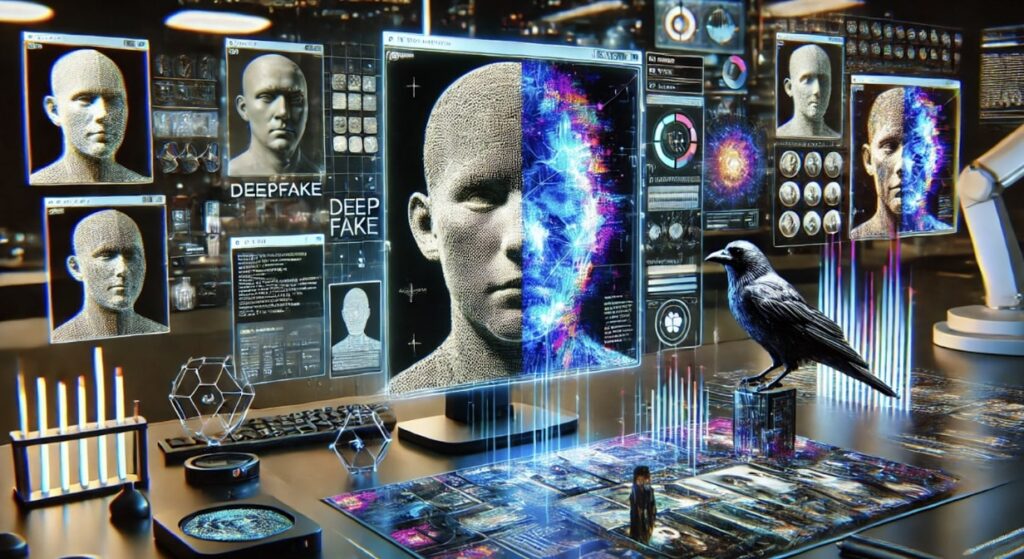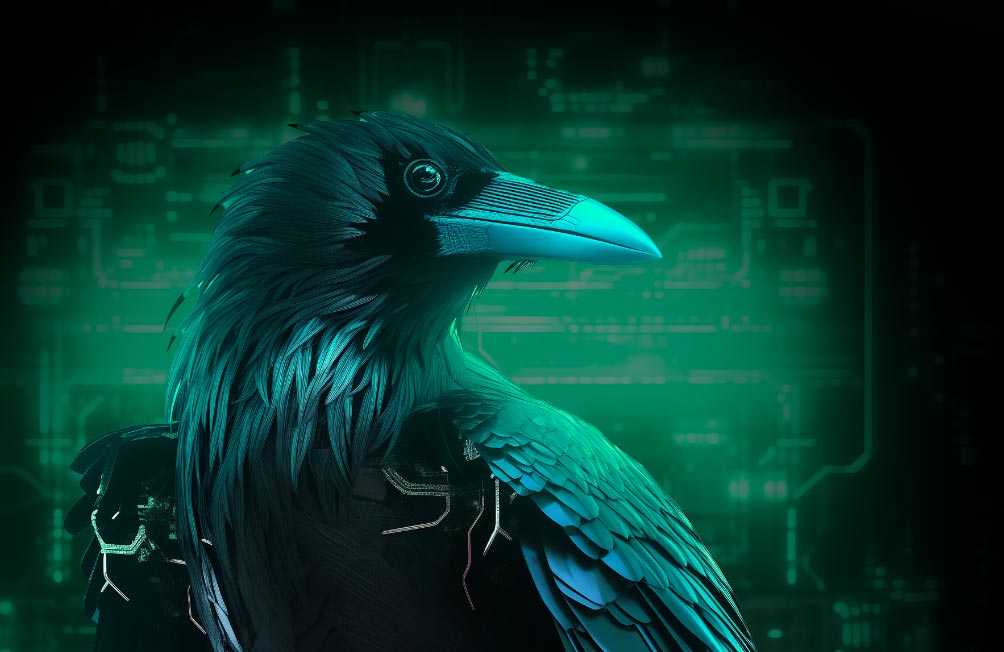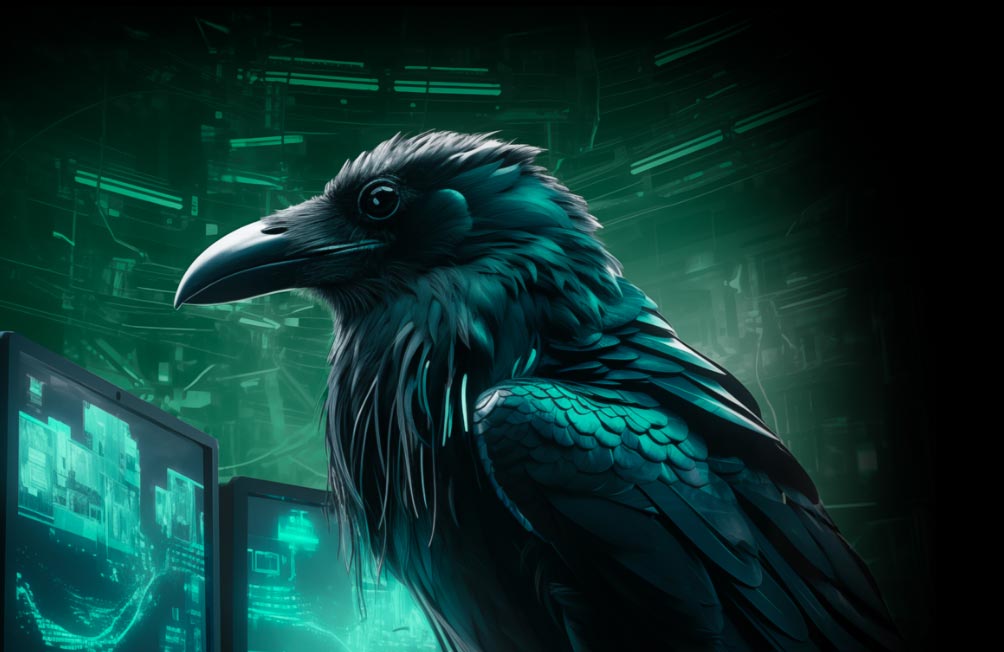Deepfake Detection Solutions: Innovations and Best Practices
Deepfake detection solutions are evolving rapidly to keep pace with synthetic media threats. Learn about the latest AI innovations and best practices for businesses to protect against this emerging technology.

Image: Dall-E 3
Deepfake technology rapidly evolved, allowing for the creation of increasingly convincing and misleading synthetic images and videos. As deepfakes become more widespread and sophisticated, the demand for effective detection solutions has grown exponentially. This blog post will explore the latest innovations in deepfake detection and provide best practices for businesses looking to protect themselves from this emerging threat.
Current State of Deepfake Detection
Various tools and technologies are available for detecting deepfakes, ranging from manual forensic analysis to automated AI-based solutions. Popular approaches include analyzing inconsistencies in facial movements, detecting artifacts introduced during the synthesis process, and comparing suspected deepfakes against known authentic media.
LEARN MORE: What Is Narrative Intelligence?
Challenges in Detection
Despite the progress made in deepfake detection, significant challenges remain. False positives, where authentic media is incorrectly flagged as a deepfake, can lead to confusion and mistrust. Moreover, as deepfake technology advances, detection methods must constantly adapt to keep up with the latest techniques used by malicious actors.
Case Studies
Recent high-profile cases demonstrate the real-world implications of deepfakes for businesses. In one instance, a deepfake video of a CEO announcing false financial information led to temporary stock market disruption. Another case involved a deepfake audio clip used to scam a company out of millions of dollars. These examples underscore the importance of robust deepfake detection solutions.
Innovations in Deepfake Detection Technology
AI and Machine Learning Advancements
Artificial intelligence and machine learning are at the forefront of deepfake detection innovation. AI algorithms can learn to identify subtle patterns and anomalies that indicate a deepfake by training on vast natural and synthetic media datasets through a Narrative Intelligence Platform. As these technologies advance, they will enable more accurate and efficient detection.
Real-Time Detection Capabilities
In high-risk environments, such as live broadcasts or security systems, real-time deepfake detection is crucial. Researchers are developing tools that can analyze media streams in real-time, flagging potential deepfakes as they occur. This capability will be essential for preventing the spread of misinformation during critical events.
Multimodal Detection Approaches
Traditionally, deepfake detection has focused primarily on visual analysis. However, there is a growing trend toward multimodal approaches incorporating audio, video, and text analysis. Leveraging multiple data sources can provide a more comprehensive and accurate assessment of media authenticity.
Blockchain and Decentralized Solutions
Blockchain technology offers a promising avenue for combating deepfakes through decentralized content verification. By creating immutable records of original media and tracking its provenance, blockchain solutions can help establish the authenticity of content and prevent tampering. Decentralized networks enable collaborative detection efforts, allowing multiple parties to contribute to and benefit from shared knowledge.
Collaborative Platforms
As the threat of deepfakes grows, industry-wide collaboration has become increasingly important. Platforms like the Deep Trust Alliance and the Content Authenticity Initiative bring together technology companies, media organizations, and academic institutions to share data, develop standards, and advance deepfake detection technology. These collaborative efforts will be essential for staying ahead of the evolving deepfake landscape.
Best Practices for Implementing Deepfake Detection Solutions
Assessing Your Organization’s Needs
When implementing deepfake detection solutions, businesses must first evaluate their specific needs. Factors to consider include the industry, risk profile, and available resources. For example, a media company may require more stringent detection capabilities than a small retail business. Understanding these unique requirements will help guide the selection and implementing of appropriate tools.
Choosing the Right Tools
Choosing the right tools can be challenging. Critical criteria include scalability, integration capabilities, and vendor reputation to offer deepfake detection as part of a larger narrative attack protection AI-based platform. Scalability ensures that the solution can grow with the organization’s needs, while integration capabilities allow for seamless incorporation into existing security frameworks. Vendor reputation and track record are also important for ensuring reliable support and updates.
Integrating with Existing Security Infrastructure
Deepfake detection should not be treated as a standalone solution but as part of a comprehensive security strategy against narrative attacks. Integrating narrative intelligence with security infrastructure, such as threat intelligence and social media listening tools, can provide a more robust defense against deepfakes. This integration also enables a more streamlined response to potential threats.
Regular Training and Updates
As deepfake technology evolves, it is crucial to keep detection systems and staff knowledge current. Regular employee training on identifying and reporting suspected deepfakes can be an essential first defense line. Additionally, ensuring that detection tools are continuously updated with the latest algorithms and data is vital to maintaining their effectiveness over time.
Collaborating with External Experts
For many organizations, developing in-house deepfake detection capabilities are overwhelming as the AI technology evolves so quickly. Collaborating with external cybersecurity and narrative intelligence experts can provide access to advanced tools and expertise in these cases. These partnerships can help businesses stay ahead of the curve without the need for significant internal resources.
Emerging Trends to Watch
Deepfake-as-a-Service
The emergence of Deepfake-as-a-Service (DFaaS) platforms, which allow users, threat actors or nation-states to create deepfakes with minimal technical knowledge, poses a significant threat to organizations. As these services become more accessible, the volume of deepfakes and their quality will likely increase, making automated detection solutions even more crucial.
Regulation and Legal Frameworks
As the societal impact of deepfakes becomes more apparent, governments and regulatory bodies are beginning to take notice. Developing legal frameworks and regulations surrounding deepfake creation and distribution could significantly affect detection solutions. Businesses must stay informed about these developments to ensure compliance and adapt their strategies accordingly.
Public Awareness and Education
In addition to technological solutions, public awareness and education will play a crucial role in combating the spread of deepfakes. As individuals become more informed about the existence and potential impact of deepfakes, they can serve as an essential line of defense by critically evaluating media and reporting suspected fakes. Organizations can contribute to this effort by promoting media literacy and supporting educational initiatives.
The Future of Deepfake Detection: Predictions
AI Dominance
Artificial intelligence will likely dominate the deepfake detection and narrative intelligence landscape as it advances. In the future, we may see the development of autonomous narrative attack detection systems that can continuously monitor media streams and adapt to new deepfake techniques with minimal human intervention. However, the increasing sophistication of AI-generated deepfakes will also present new challenges for detection algorithms.
Standardization Across Industries
To combat the global threat of deepfakes, standardization of detection methods and collaboration across industries will be essential. Developing universal benchmarks and protocols for evaluating detection tools could ensure consistent protection. International cooperation among governments, technology companies, and academic institutions will also be crucial for sharing knowledge and resources.
Ethical Considerations
As deepfake detection technology becomes more advanced, ethical considerations will emerge. Using AI algorithms to analyze personal data and media raises concerns about privacy and potential misuse. Ensuring detection solutions are transparent and accountable and respecting individual rights will be a crucial challenge for the industry.
The Importance of Staying Ahead
In the rapidly evolving world of deepfakes, staying ahead of the curve is essential for businesses looking to protect their reputation, assets, and stakeholders. By understanding the current state of deepfake detection, adopting innovative solutions, and following best practices, organizations can position themselves to navigate this emerging threat effectively.
Call to Action
To safeguard against the potential impact of deepfakes, businesses must take proactive steps to evaluate their detection strategies and implement a narrative intelligence platform that protects against deepfakes and narrative attacks, as they are all interconnected. AI-generated deepfake images and videos can be weaponized to create and amplify false and harmful narratives, making narrative attacks more believable and challenging to detect. The damage caused by such deceptive content can profoundly erode trust in media, institutions, and our judgment. Simply identifying whether the content is AI-generated isn’t enough. To fully understand and mitigate the impact, organizations need to gain awareness of how far and how fast deepfakes have spread and which actors or bot networks drove reach. By staying informed about the latest advancements in deepfake technology and collaborating with experts in the field, organizations can build a strong defense against this growing challenge.
Q&A For Organizations
Q: What are the latest innovations in deepfake detection? A: Some of the most promising innovations include AI and machine learning advancements, real-time detection capabilities, multimodal detection approaches, blockchain-based solutions, and collaborative narrative intelligence platforms for detecting deepfakes before they scale and cause reputational, financial and operational harm.
Q: How can businesses stay ahead of deepfake threats? A: To stay ahead of deepfake threats, businesses should assess their specific needs, choose the right detection tools, integrate them with existing threat intelligence and social listening infrastructure, provide regular training and updates, and collaborate with external experts.
Q: What are the best practices for implementing deepfake detection solutions? A: Best practices include thoroughly evaluating organizational requirements and selecting a scalable Narrative Intelligence Platform that addresses deepfakes by partnering with experienced providers.
The Way Forward
As organizations navigate the complex landscape of deepfake detection, leaders must stay informed, proactive, and adaptable. Here are five key takeaways to guide your approach:
Prioritize Deepfake, Narrative Attack Detection: Recognize the growing threat of narrative attacks, including deepfakes, and prioritize detection solutions as a critical component of your overall cybersecurity and communications strategy. Allocate sufficient resources and attention to this issue to safeguard your organization’s reputation and assets.
Stay Informed About Emerging Technologies: Keep abreast of the latest advancements in deepfake detection technology, such as AI, machine learning, and real-time detection. Understanding these innovations will help you make informed decisions about the tools and strategies best suited to your organization’s needs.
Foster a Culture of Media Literacy: Promote media literacy and critical thinking among your employees and stakeholders. Encourage a healthy skepticism towards media content and provide training on identifying potential deepfakes. A well-informed workforce can serve as an essential defense against deepfake threats.
Collaborate and Share Knowledge: Engage with technology experts, industry partners, cybersecurity experts, and academic institutions to share knowledge, best practices, and resources related to deepfake detection. Participating in collaborative platforms and initiatives can help you stay ahead of the curve and benefit from collective expertise.
Embrace Adaptability and Continuous Improvement: Recognize that the deepfake landscape constantly evolves, and detection solutions must adapt accordingly. Embrace a continuous improvement mindset, regularly updating your tools, strategies, and staff knowledge to keep pace with emerging threats and technological advancements.
To learn how Blackbird.AI detects deepfake attacks through narrative intelligence, learn more here or book a demo.
Need help protecting your organization?
Book a demo today to learn more about Blackbird.AI.



